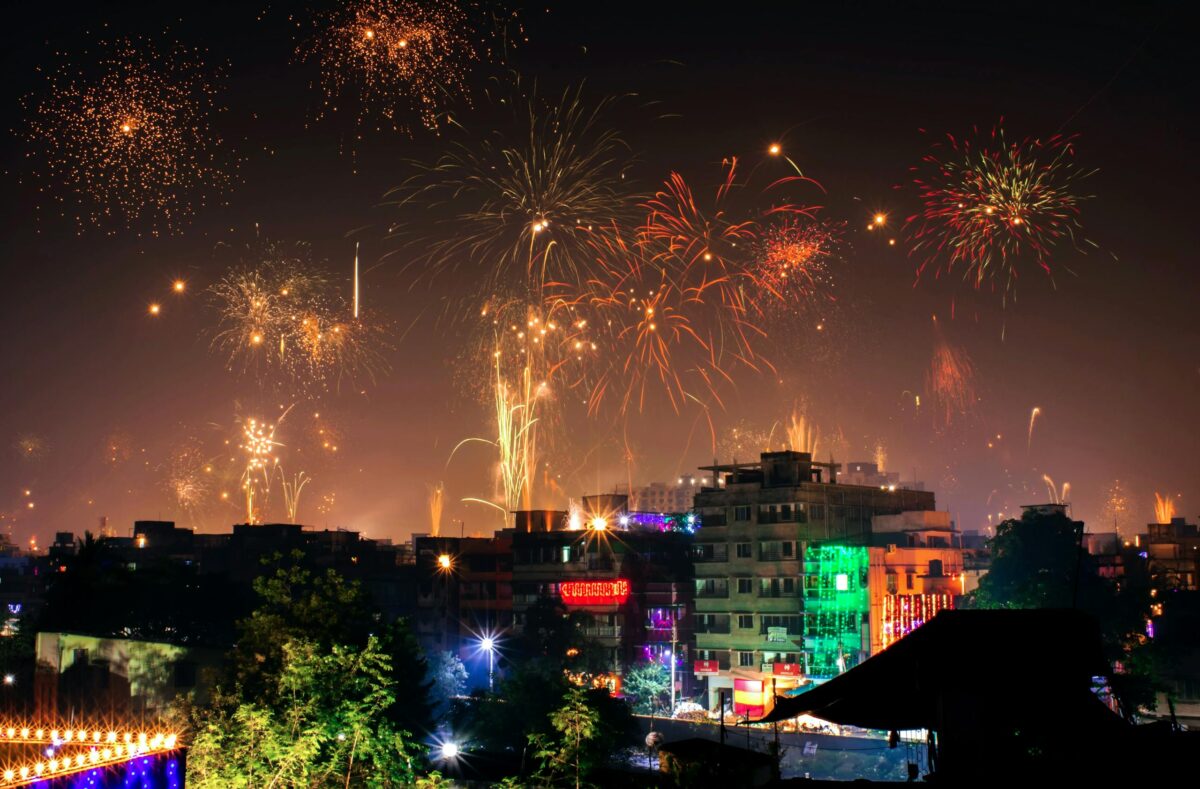What is Diwali? The Simple Guide to the Festival of Lights
Diwali, or the Festival of Lights, is the biggest and most joyous celebration across India and the Indian diaspora. It is the celebration of light winning over darkness, and good triumphing over evil. For days, homes and streets glow with the light of oil lamps known as diyas, and the air is filled with the scent of delicious treats, the sound of laughter, and the powerful feeling of hope.
People spend weeks building up excitement for Diwali. They clean their homes from top to bottom, shop for new clothes, and plan feasts with family and friends. A huge part of the fun is exchanging Diwali gifts as a way of showing love and appreciation. Basically, it is a time for new beginnings, gratitude, and sharing happy memories.
The Meaning of Diwali.
The name Diwali is derived from the ancient Sanskrit word, Deepavali, which means “a row or series of lights.” This explains the reason behind the popular Diwali tradition of lighting rows of diyas (oil lamps) to decorate temples, homes, and businesses.
This isn’t done just for looks. The light symbolizes the inner light inside each one of us, and the good qualities such as knowledge and kindness that protect us from darkness and ignorance. It is a reminder that light will always win.
The Significance of Diwali: Why We Celebrate
The exciting story behind Diwali stems from the tale of Ramayana where people rejoice over the day Lord Rama, his wife Sita, and brother Lakshmana finally returned home to their city of Ayodhya after 14 long years away.
The people of Ayodhya were so happy that they lit thousands of diyas to light the path home for their beloved king. They wanted to celebrate the victory of good (Rama) over evil (the demon king Ravana). It is this tradition of lighting lamps that we continue today.
It is important to know that not only Indians celebrate Diwali, but also that different communities celebrate it for different reasons. For Jains, it marks the day Lord Mahavira reached enlightenment (Nirvana), and for Sikhs, it celebrates the day the sixth Guru, Hargobind Sahib Ji, and 52 Hindu princes were liberated from Emperor Jahangir’s prison. This makes Diwali a rich and inclusive festival for a diverse community of people.
The Five Days of Diwali
Diwali isn’t just a one-day event. It is a five-day celebration where each day brings with it some special activities and observances.
- Day 1: Dhanteras. This is the day of prosperity, and people often celebrate it by buying or gifting gold and silver jewelry, or new kitchen utensils, as a sign of good luck. It is also the day that homes are cleaned and diyas are lit.
- Day 2: Choti Diwali (Small Diwali). On this day, people take an early morning oil bath and make beautiful rangoli art on their floors using flowers, paint, and other décor items. It is the warm-up for the main event.
- Day 3: The Main Diwali Festival. This is the biggest night when families gather for Lakshmi Puja, a prayer ceremony to the goddess of wealth. During this ceremony, everyone lights diyas, and fireworks light up the night sky. This is also the main night for sharing Diwali gifts and sweets.
- Day 4: Govardhan Puja. This day is about gratitude and relationships, and some communities make small heaps/hills of food to symbolize a mountain. It is also the day that husbands and wives get to appreciate each other and celebrate their bond through prayer and gifting.
- Day 5: Bhai Dooj. This is the day that culminates Diwali by celebrating sibling love and bonds between brothers and sisters. Sisters pray for their brothers’ long lives, and brothers give gifts in return.
Diwali Traditions Everyone Loves
In case we haven’t said it enough by now, the most popular Diwali tradition is, of course, lighting Diyas. These small clay or ceramic lamps are filled with oil and a cotton wick, and lighting them is a way to invite good luck and positivity into the home.
The second major tradition is creating rangoli art. This art comprises bright and colorful designs made on the floor using colored sand, paint, rice, and flower petals. This kind of art is placed at home entrances to welcome guests and bring good fortune.
Finally, we can’t forget about the food. Preparing and sharing meals and sweets is a huge part of the Diwali celebrations. Families make and buy treats such as creamy barfi and syrupy gulab jamun, which they share with neighbors as a way of spreading joy.
The Joy of Giving Diwali Gifts
Other than feasting and lighting diyas and fireworks, giving Diwali gifts is also a key part of the celebrations. It is a way of strengthening relationships between families and families, and even appreciating business associates.
In today’s globalized world, where workplaces employ people from diverse cultures and ethnicities, corporate Diwali gifts have become common especially with companies showing appreciation to their employees during Diwali festivities. If you are looking for corporate gift ideas for Diwali, check out this useful guide to thoughtful Diwali gifts that include sweet boxes, dried fruits, and Diwali decorations.
How to Celebrate Diwali in the USA
Celebrating Diwali in the USA is a wonderful way for families to connect to their heritage and match the festivities back home. Many Indian grocery stores and gift shops now sell diyas, sweets, and art items, making it easier than ever to find what you need. If you can’t find a store near you, you can always find fantastic Diwali gifts online, such as Diwali gift hampers, Diwali lights, Diwali decorations, and other related merchandise.
The spirit of Diwali is universal, and there is simply no reason to miss out anymore just because you are far from home. Regardless of where you are in the world, you can still clean your home, light a lamp, share a meal with loved ones, and reflect on being a light for others. That’s what the Festival of Lights is all about.
A Modern Twist: An Eco-Friendly Diwali
Recently, more people are choosing to celebrate an eco-friendly Diwali, which means being mindful of the environment while still having fun.
Instead of loud firecrackers that cause pollution, many are opting for sparklers or laser light shows, using natural (and easily biodegradable) materials for rangoli art, and choosing gifts and gift wrapping that are better for the planet.
This shift shows how the old Diwali traditions can adapt to modern values while still keeping the core message of Diwali the same, i.e., celebrating light and goodness.
Happy Diwali!
How you choose to celebrate this coming Diwali is up to you. You just need to remember that the goal is simple: cherish your loved ones, let go of negativity, and welcome a brighter future. We hope this guide helps you understand and enjoy this beautiful festival, and from our family to yours, Happy Diwali!
For more inspiration, explore our complete collection of Diwali gift hampers.

